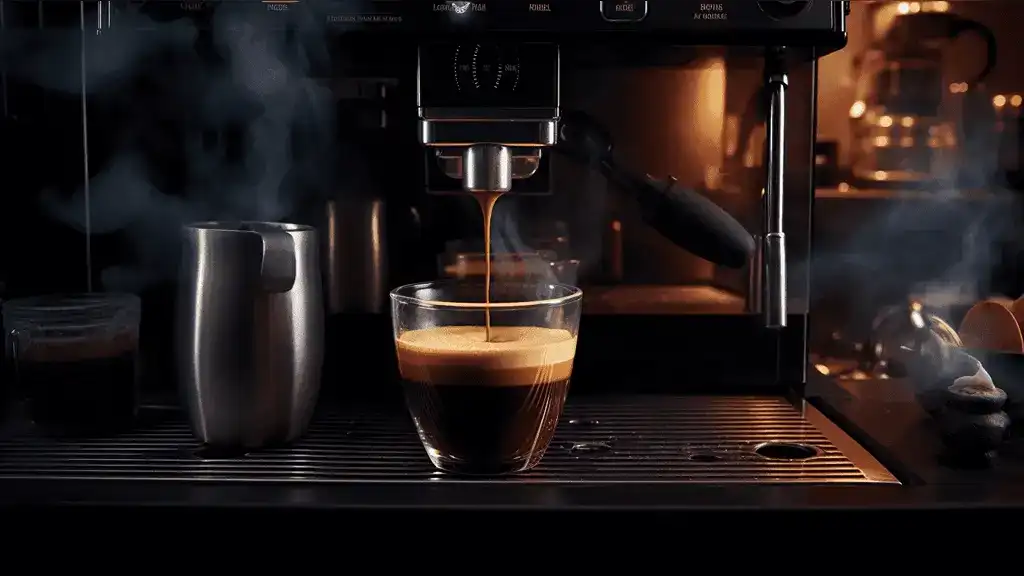Are you craving a strong cup of Kapeng Barako but don’t have a coffee maker? No worries! We’ve got you covered with simple brewing methods that don’t require any fancy equipment.
Whether you prefer the traditional Filipino boiling method or the smoothness of a French press, we’ve got step-by-step instructions to help you make the perfect cup.
Ever wondered about the origins of the rich Kapeng Barako? Dive into the mystical regions where Liberica coffee grows and discover its roots.”
So grab your favorite mug and get ready to enjoy the rich, bold flavors of Kapeng Barako, without the need for a coffee maker.
Traditional Filipino Boiling Method
To make kapeng barako without a coffee maker, you can use the traditional Filipino boiling method.
First, gather your ingredients: 2 tablespoons of kapeng barako grounds, 2 cups of water, and sugar to taste.
Fill a pot with water and place it on the stove over medium heat. Allow the water to come to a boil.
Once it starts boiling, add the kapeng barako grounds to the pot. Stir the mixture gently and let it simmer for about 5 minutes. This will allow the coffee to infuse into the water and release its bold flavors.
After 5 minutes, remove the pot from the heat and let it sit for a few minutes to allow the grounds to settle.
Carefully pour the coffee into a cup, ensuring that you leave the grounds behind. Add sugar to taste, and stir well.
Now you have a steaming cup of delicious kapeng barako, ready to be enjoyed. To truly appreciate Kapeng Barako, explore the unique characteristics of Liberica coffee that set it apart.
The traditional Filipino boiling method is a simple yet effective way to make this strong and aromatic coffee without the need for a coffee maker.
French Press Method
The French press method is a convenient way to make kapeng barako without a coffee maker.
To get started, you will need kapeng barako beans, hot water, a French press, and a grinder.
First, measure out the desired amount of kapeng barako beans and grind them to a coarse consistency.
Next, heat water to the desired temperature, around 195 to 205 degrees Fahrenheit.
Add the ground coffee to the French press, using about 1 tablespoon of coffee for every 4 ounces of water.
Pour the hot water over the coffee grounds, making sure to saturate all of them.
Stir the mixture gently, and then place the plunger on top of the French press but do not press it down just yet.
Let the coffee steep for about 4 minutes to extract the rich flavors.
Finally, slowly press the plunger down, separating the coffee grounds from the brewed coffee.
Pour the freshly brewed kapeng barako into your favorite mug and enjoy its bold and aromatic taste. Delve deeper into the flavor nuances of Liberica coffee and uncover the secrets behind its bold taste.
Cold Brew Technique
Using the cold brew technique, you can make a delicious cup of kapeng barako without a coffee maker. Here’s how:
- Patience: The cold brew method requires time, but the result is worth it. As you wait for the coffee to steep, take a moment to appreciate the anticipation building up. The rich aroma that will soon fill your kitchen will make every second worth it.
- Simplicity: With just a few simple tools, you can create a smooth and flavorful cup of kapeng barako. All you need is a jar or a pitcher, coarsely ground kapeng barako beans, and water. The simplicity of this method allows you to focus on the true essence of the coffee without any unnecessary distractions.
- Versatility: Cold brew allows you to experiment and customize your coffee to suit your taste. Adjust the coffee-to-water ratio, steeping time, and even add some spices or sweeteners if you like. This versatility empowers you to create a cup of kapeng barako that perfectly matches your preferences, making each sip a truly personal experience.
Embrace the cold brew technique and explore the world of kapeng barako without the need for a coffee maker. Enjoy the process, savor the aroma, and indulge in the rich flavors that this method brings to your cup.
Curious about the kick Kapeng Barako provides? Check out the caffeine content in Liberica coffee and see how it compares.
Pour-Over Technique
With the pour-over technique, you can achieve a strong and flavorful cup of kapeng barako even without a coffee maker. All you need is some hot water, freshly ground kapeng barako beans, a filter, and a mug. Here’s a step-by-step guide on how to prepare your kapeng barako using the pour-over technique:
- Boil water: Start by heating water to just below boiling point. You’ll need around 200ml for one cup of kapeng barako.
- Grind the beans: Grind your kapeng barako beans to a medium-fine consistency. Aim for a texture similar to granulated sugar.
- Set up the pour-over: Place a filter in a pour-over cone or a makeshift contraption using a funnel and a mug. Make sure the filter is properly seated.
- Rinse the filter: Pour a small amount of hot water over the filter to rinse away any papery taste. Discard the rinse water.
- Add the coffee: Add 2 tablespoons of ground kapeng barako to the filter.
- Start pouring: Slowly pour the hot water over the coffee grounds in a circular motion. Aim to saturate all the grounds evenly.
- Let it brew: Allow the water to drip through the filter and into the mug. The brewing process should take around 3-4 minutes.
- Enjoy your kapeng barako: Once all the water has passed through the filter, remove the pour-over cone or makeshift contraption. Stir the coffee and savor the rich aroma and bold flavor of your homemade kapeng barako.
Expand your coffee knowledge by distinguishing between Liberica and Excelsa. Discover what makes each unique.
Here’s a table to compare the pour-over technique with other brewing methods:
| Brewing Method | Equipment Needed | Brew Time |
|---|---|---|
| Pour-Over | Pour-over cone, filter, mug | 3-4 minutes |
| French Press | French press, coarse ground coffee, hot water | 4-5 minutes |
| Espresso Machine | Espresso machine, fine ground coffee, hot water | 25-30 seconds |
As you can see, the pour-over technique offers a relatively quick brewing time and requires minimal equipment. Give it a try and enjoy a delicious cup of kapeng barako anytime, anywhere.
Moka Pot Brewing
To achieve a strong and flavorful cup of kapeng barako using the Moka Pot brewing method, you’ll need a Moka pot, finely ground kapeng barako beans, and some hot water.
Here’s how you can make it:
- Fill the bottom chamber of the Moka pot with hot water up to the valve. This will create pressure for the brewing process.
- Place the finely ground kapeng barako beans in the filter basket. Make sure to level it off without packing it too tightly.
- Screw the top chamber onto the bottom chamber, making sure it is tightly sealed.
- Place the Moka pot on a stove over medium heat.
- As the water heats up, it will create pressure, forcing the hot water through the coffee grounds and into the top chamber.
- Keep an eye on the Moka pot and remove it from the heat once you hear a hissing sound. This indicates that all the water has been pushed through the coffee grounds.
- Pour the brewed kapeng barako into your cup and enjoy the rich and bold flavors.
Want the best brew? Explore the top Liberica coffee beans handpicked for the ultimate Kapeng Barako experience.
AeroPress Brewing
For a different brewing method, try the AeroPress for a unique and delicious cup of kapeng barako.
The AeroPress is a versatile and portable coffee maker that can produce a rich and full-bodied cup of coffee.
To brew kapeng barako using the AeroPress, start by heating water to about 200 degrees Fahrenheit. While the water is heating, grind your kapeng barako beans to a medium-coarse consistency.
Place a filter in the AeroPress cap and moisten it with hot water to remove any paper taste. Assemble the AeroPress by placing the plunger into the chamber and then placing it on top of your coffee mug.
Add the ground kapeng barako beans into the chamber, followed by the hot water. Stir the mixture for about 10 seconds to ensure proper extraction.
After stirring, insert the plunger and gently press down to extract the coffee. The entire process should take about 1-2 minutes.
Once you have extracted the coffee, you can dilute it with hot water or enjoy it as is.
The AeroPress brewing method is a quick and convenient way to enjoy a delicious cup of kapeng barako without the need for a traditional coffee maker. Dive into the coffee world’s intricacies by comparing Liberica and Robusta. See how these beans stack up.
Cloth Drip Method
Now that you’ve learned how to prepare kapeng barako using the AeroPress brewing method, let’s explore another way to enjoy this rich and bold Filipino coffee without a coffee maker.
Introducing the cloth drip method, a traditional way of brewing coffee that brings out the full flavor of kapeng barako.
The Ritual: There’s something nostalgic and comforting about the cloth drip method. The process of pouring hot water over the coffee grounds, watching it slowly drip through the cloth filter, creates a sense of anticipation and excitement.
The Aroma: As the hot water seeps through the coffee grounds and drips into your cup, the aroma of kapeng barako fills the air. The strong, earthy scent awakens your senses and prepares you for the bold flavor that awaits.
The Taste: Finally, it’s time to savor the fruits of your labor. The cloth drip method produces a full-bodied cup of kapeng barako, with a robust flavor that lingers on your palate.
Each sip is a journey through the rich coffee notes, leaving you craving for more. Fancy growing your own Kapeng Barako? Here are some expert tips on cultivating Liberica coffee beans at home.
Tips for the Perfect Brew
When brewing kapeng barako without a coffee maker, you’ll want to ensure that your water is at the ideal temperature for extraction. Start by boiling water in a kettle or a pot on the stove.
Once the water comes to a boil, let it cool for about 30 seconds to a minute. This will bring the temperature down to around 195 to 205 degrees Fahrenheit, which is perfect for brewing kapeng barako.
Next, measure the desired amount of kapeng barako beans and grind them to a coarse consistency. For a strong cup of coffee, use around 1 to 2 tablespoons of ground beans per 6 ounces of water. Adjust the amount according to your taste preference.
Place the ground kapeng barako in a heat-resistant container, such as a French press or a mason jar. Slowly pour the hot water over the coffee grounds, making sure to saturate them evenly. Give it a gentle stir to ensure all the grounds are fully immersed in water.
Cover the container with a lid or a clean cloth and let it steep for about 4 to 5 minutes. This will allow the flavors to fully develop. Once the steeping time is up, press down on the plunger of the French press or strain the coffee using a fine-mesh sieve or cheesecloth.
Pour the freshly brewed kapeng barako into your favorite mug and enjoy the rich and bold flavors. Add sugar or milk, if desired.
Now you can savor the delicious taste of kapeng barako, even without a coffee maker. If you ever decide to switch things up, here’s how to brew Kapeng Barako using coffee machine methods.
Filtering Options
To filter your kapeng barako without a coffee maker, you can use a fine-mesh sieve or cheesecloth to strain the coffee grounds from the brewed liquid. This method ensures that you get a smooth and flavorful cup of coffee without any residue or grittiness.
Here are three options to consider when filtering your kapeng barako:
- Fine-mesh sieve: This is the easiest and most common method. All you need to do is place the sieve over your cup or mug and slowly pour the brewed coffee through it. The fine mesh will catch the coffee grounds, allowing the liquid to pass through.
- Cheesecloth: If you want a cleaner and clearer cup of coffee, you can use a cheesecloth instead of a sieve. Simply place the cheesecloth over a container or pitcher and slowly pour the brewed coffee through it. The cheesecloth will remove any small particles or sediment from the coffee, resulting in a smoother texture.
- French press: If you happen to have a French press at home, you can use it to filter your kapeng barako. After brewing the coffee, pour it into the French press and slowly press down the plunger. This will separate the coffee grounds from the liquid, giving you a rich and aromatic cup.
With these filtering options, you can enjoy a delicious cup of kapeng barako even without a coffee maker. So go ahead, brew your coffee and savor the bold flavors of this local Filipino favorite.
Serving Options
To serve your kapeng barako, you can add a touch of sweetness by stirring in some sugar or condensed milk. If you prefer a creamier taste, you can also add a splash of evaporated milk or coconut milk. Here’s a table to summarize the filtering and serving options for kapeng barako without a coffee maker:
| Filtering Options | Serving Options |
|---|---|
| Fine-mesh sieve | Sugar |
| Cheesecloth | Condensed milk |
| Paper towel | Evaporated milk |
| Clean cloth | Coconut milk |
With these simple alternatives, you can still enjoy a flavorful cup of kapeng barako even without a coffee maker. So go ahead, give it a try and savor the bold and aromatic taste of this Filipino coffee.
Conclusion
So there you have it, a variety of methods to prepare kapeng barako without a coffee maker. Broaden your coffee horizons by contrasting Liberica and Arabica. Unearth the distinctions between these coffee giants.
Whether you choose the traditional boiling method, the French press technique, cold brew, pour-over, Moka pot brewing, or the cloth drip method, you can enjoy a rich and flavorful cup of this Filipino coffee.
Don’t forget to follow the tips for the perfect brew and experiment with filtering and serving options to enhance your kapeng barako experience.
Cheers!






